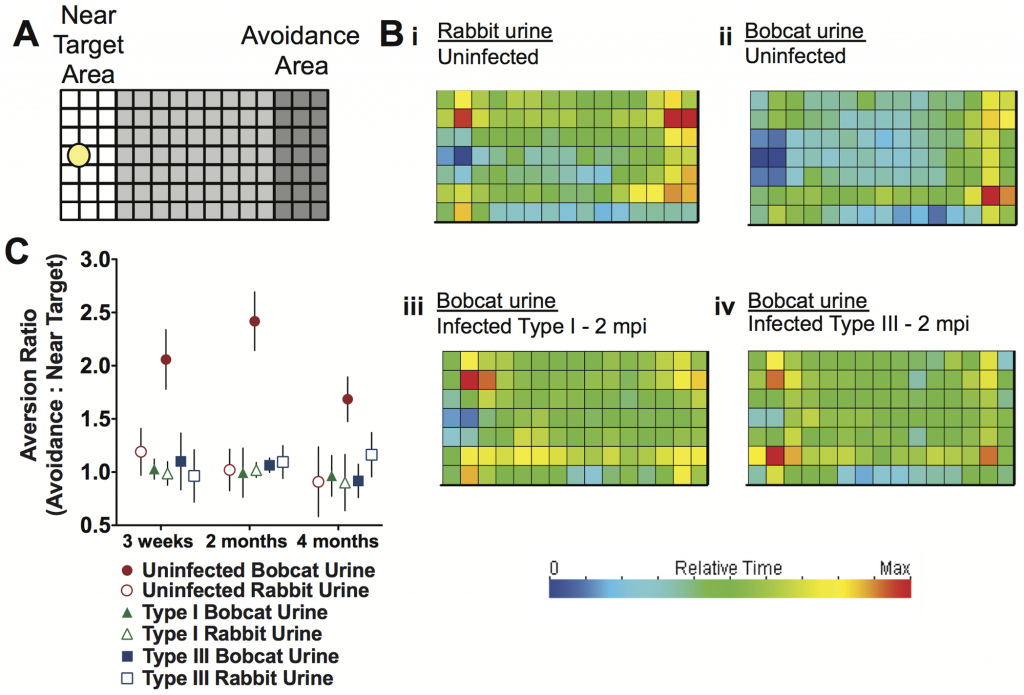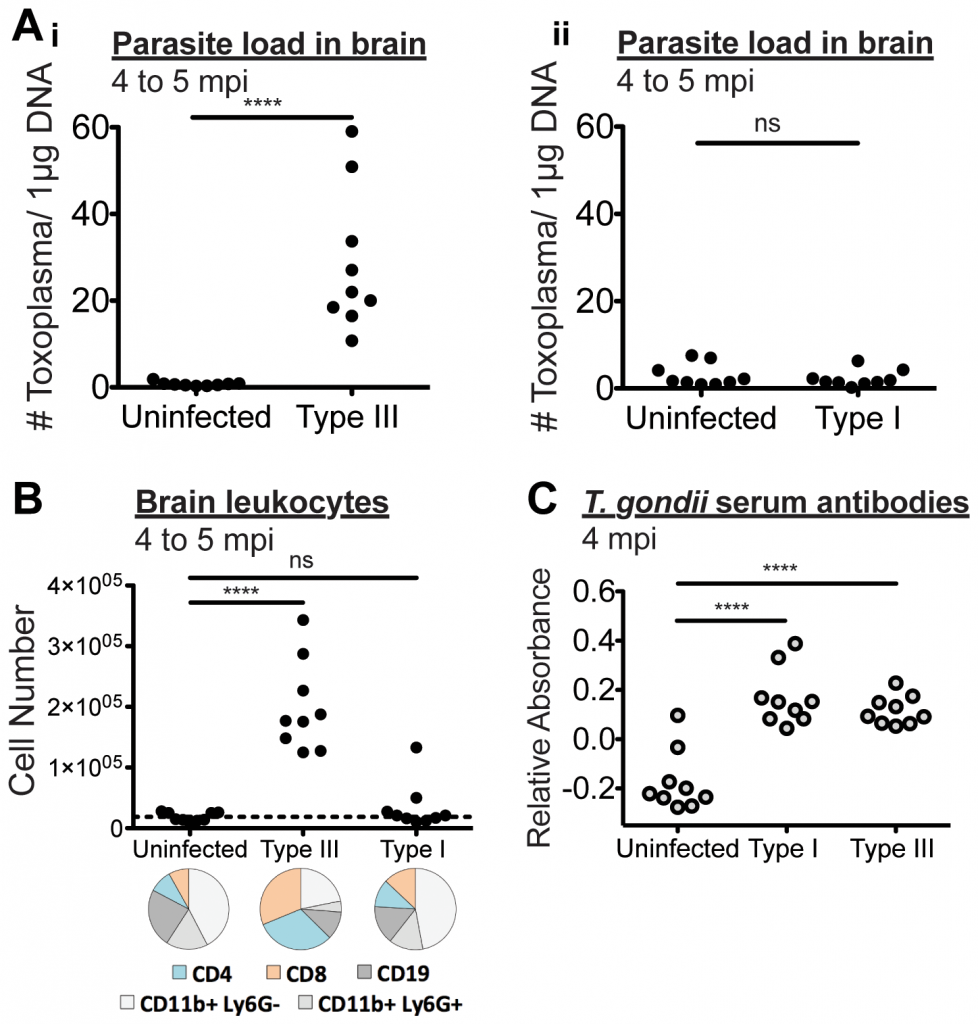Fear not the cat pee, little parasitized one.
Vocabulary:
oocysts – a protozoan parasitic zygote encapsulated in a very thick-walled sphere that protects it while it develops.
antibodies – proteins secreted by B cells of the immune system. In response to an infection, the B cells that make a particular antibody are activated and start to make a lot of it. They specifically recognize and bind to some part of the infectious organism to guide the body’s defenses against it. After the infection has been killed off, some antibodies remain circulating in the bloodstream to be better prepared to fight off this kind of infection if it happens again.
The article:
Ingram, W.M. et al. (2013) Mice infected with low-virulence strains of Toxoplasma gondii lose their innate aversion to cat urine, even after extensive parasite clearance. PLoS ONE 8(9): e75246. doi:10.1371/journal.pone.0075246
Toxoplasma gondii are a common parasite of both mammals and birds. It can cause serious illness in humans (toxoplasmosis), but usually only in young children, older adults, and other people with weakened immune systems. Severe toxoplasmosis can cause damage to the brain and the eyes. Importantly, it can be transmitted from mother to fetus, and the baby can sometimes be born with brain or eye damage and deformities. A common source of human infection is domesticated cats, as T. gondii forms oocysts that are shed into the cat’s feces. Cats are a common source both because human owners tend toward close contact with their pets, and also because maturation in a cat’s digestive tract is a necessary part of the toxoplasma life cycle.
Aside from the occasional human infection, toxoplasma is primarily spread through rodent communities. However, there is a problem that the parasite must overcome to sustain its reproduction: mice are naturally afraid of cats and avoid them, but the parasite needs to get into a cat for sexual reproduction (in any other host organism, T. gondii can only reproduce asexually). As it turns out, infected mice show behavioral changes including no longer avoiding areas that smell like cat. Ingram et al, examine the parameters of this behavioral change.
The experimental setup.
9 week old male mice were infected with T. gondii cultures. They were then tested for their behavior in response to bobcat urine. The basic setup is shown in the figure below.
One end of the cage (target area) holds a small dish (yellow circle) with urine from either bobcat or rabbit. The entire cage is divided into zones by infrared laser grid, and monitored automatically as the animal would break the sensor beams as it moved around. The end of the cage opposite the target area was designated the avoidance area.

(A) Experimental grid. (B) Frequency distribution of mouse locations. (C) Ratio of time spent in avoidance area to time in target area.
Results.
As expected, uninfected mice would stay away from the target zone when the dish held bobcat urine, but not when the dish held rabbit urine. Part B in the figure above, panels i and ii. However, panels iii and iv show that mice infected with either of two different strains of Toxoplasma behaved as if the target zone did not hold cat urine, even when it did. Incidentally, they did make sure the overall sense of smell was preserved using the “hidden cookie” test.
Interestingly, when they tested the brains of the mice after four weeks, even though they behaved in the same way, they had different levels of
active infection. Measured by the amount of Toxoplasma DNA as well as by the presence of lymphocytes (which would not be in the brain unless there was an active infection), Type 3 T. gondii was clearly present and active, while Type 1 T. gondii levels were not significantly higher than uninfected controls.

(A) Parasite load in brain. (B) Infiltration of white blood cells into brain. (C) Antibodies indicate that there has been an immune response at some point in the recent past.
So this is an unexpected finding. Not only does an active Toxoplasma infection somehow alter the brain functions so that the mice ignore their usual fears (smell of cat) but even after most or maybe even all of the parasite has been cleared, the brain function remains reprogrammed. Since there are some reports of a link between schizophrenia and toxoplasmosis in humans, this could have some significant implications on human health, if there are long-term consequences on the brain even after the toxoplasmosis appears to be cured.

![By User:Lxowle [2009, CC-BY-SA-3.0 or GFDL], via Wikimedia Commons](http://www.axopub.com/wp01/wp-content/uploads/2013/09/Cat_and_mouse.jpg)
No comments
Be the first one to leave a comment.